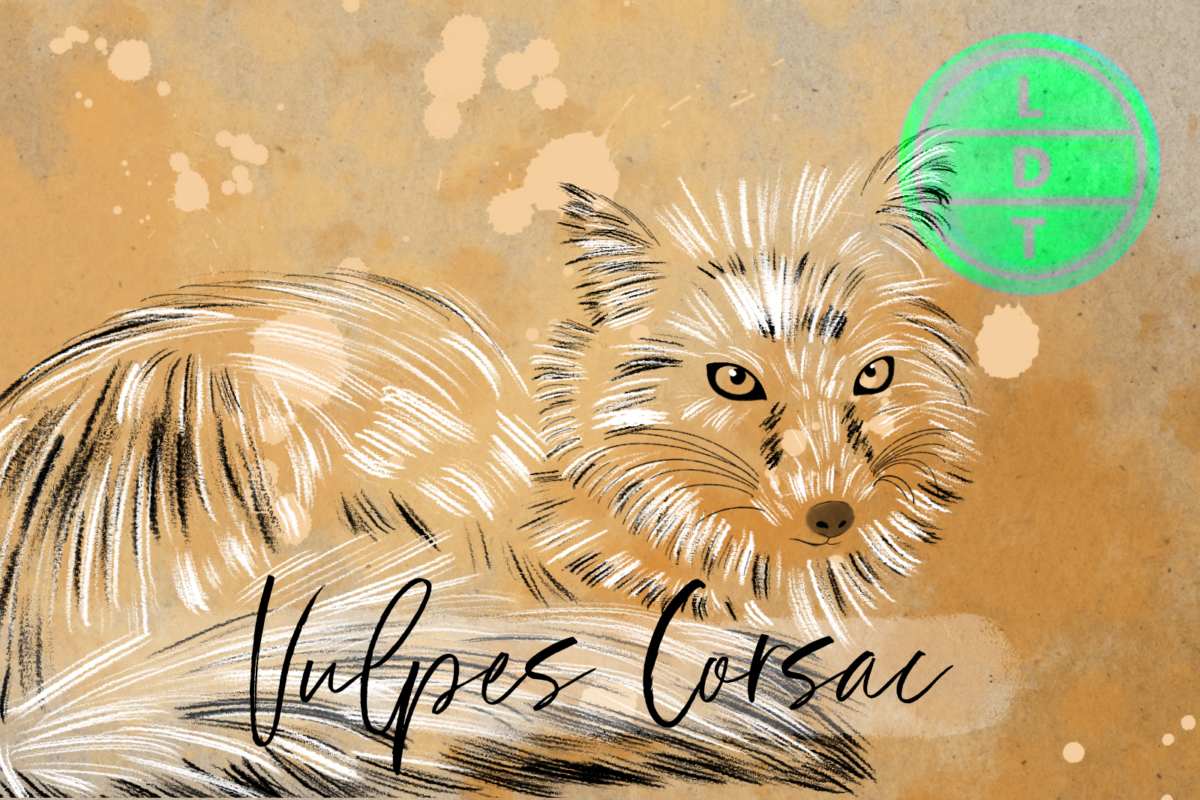“…And today we’re talking about another fox with shifty, untrustworthy eyes. But more on that later.”
The Eurasian Steppe is a vast plain where water and food can be scarce. But a wily creature can take advantage of the forbidding environment. Foxes live and thrive on every continent except for Antarctica. But to survive in the frigid, dry shrubland, it takes some special skills. The Corsac fox is a canine like any other, but it has a special skill that many of its kin can’t boast. But adversity often breeds innovation in Life, Death, and Taxonomy.
Description of the Corsac Fox
- This is as regal as foxes get.
- The Corsac fox has a light coat of creams and reddish hues around the legs and chest
- It has gray tinges with more gray in the face and back.
- Its tail is that classic long and fluffy fox tail
- It actually has a bit more of a cat-like appearance than a dog
- Very cute
Measure Up
Welcome to the beloved Measure Up segment. The official listener’s favorite part of the show! The part of the show when we present the animal’s size and dimension in relatable terms through a quiz that’s fun for the whole family. It’s also the part of the show that’s introduced by you when you send in audio of yourself saying, singing, or chittering the words Measure Up into ldtaxonomy at gmail dot com. We don’t have a new Measure Up intro!
- The Fox from from The Fox and the Crow
- Muggy-Doo
- J. Worthington Foulfellow from Pinocchio
- Br’er Fox from Song of the South
Length
- Head and body length – 45 to 65 cm (18 to 26 in)
- How many Corsac foxes go into the length of the Mongol Derby?
- Hint: The Mongol Derby is the longest horse race in the world. It spans the Mongolian Steppe and mimics the horse messaging system that was put in place by Ghengis Khan.
- 1,538,461.5 foxes. The race is 1000 Km (621.3 miles)
Weight
- 1.6 to 3.2 kilograms (3.5 to 7.1 lb)
- How many foxes go into the weight of the largest opium seizure ever?
- Hint: The opium was seized in Iran in 2007, and most of it was likely grown in Afghanistan, which is where 95% of the opium market in Europe comes from.
- 132,633.5 foxes. Iran seized 427,147 kg (941,698 lb).
Fast Facts about the Corsac Fox
- Range: Lives on the steppes of central Asia from the Stans to northern China
- Steppes are treeless grasslands at high elevations far from rivers or lakes
- Diet: Eats insects and small mammals such as hares, voles, pikas, hamsters, and squirrels
- Behavior:
- They are nocturnal and nomadic, so they don’t have a specific territory they defend.
- They need to watch out for wolves, buzzards, eagle-owls, and golden eagles.
- They can live for about a decade.
Canine Climber
You rarely ever hear of a dog getting stuck in a tree like its feline counterparts. That may be because dogs are poor climbers. Canine bodies are built for running and endurance. Pack hunters are known for dogging their prey, which is to chase them for miles until they tire out.
They’ve developed powerful back legs, but their leg joints are stiff and aren’t as able to articulate like other mammals. They struggle to wrap around tree trunks and branches. Unlike cats with inward curving claws, dog claws curve downward. They are useful as cleats for running but not for gripping trees.
Foxes, however, are unique as canines. They aren’t pack hunters and usually forage as generalists, eating mostly small prey. They are also smaller than other wolves and wild dogs and need to escape larger predators. Corsac foxes are known to be excellent climbers and can be seen climbing tree trunks.
They aren’t the only climbing canines, but there are few. They share the trees with North America’s Grey Foxes and Tanukis.
Climbing canines are anatomically doggish except for a few important features. They have rotating wrists that allow them to wrap limbs around tree trunks and hook claws into the bark at better angles. Their claws are semi-retractable and can be articulated into place when climbing trees.
Corsac Foxes climb to forage for food like squirrels, insects, and other tree resources. They may also supplement their diets with fruits and vegetables. Climbing may also help them escape predators. They are fairly slow runners and may not be able to escape larger predators in a sprint.
Ending: So stay elegant, keep an eye on the sky for predators, and climb every mountain like the corsac fox here in LDT.

